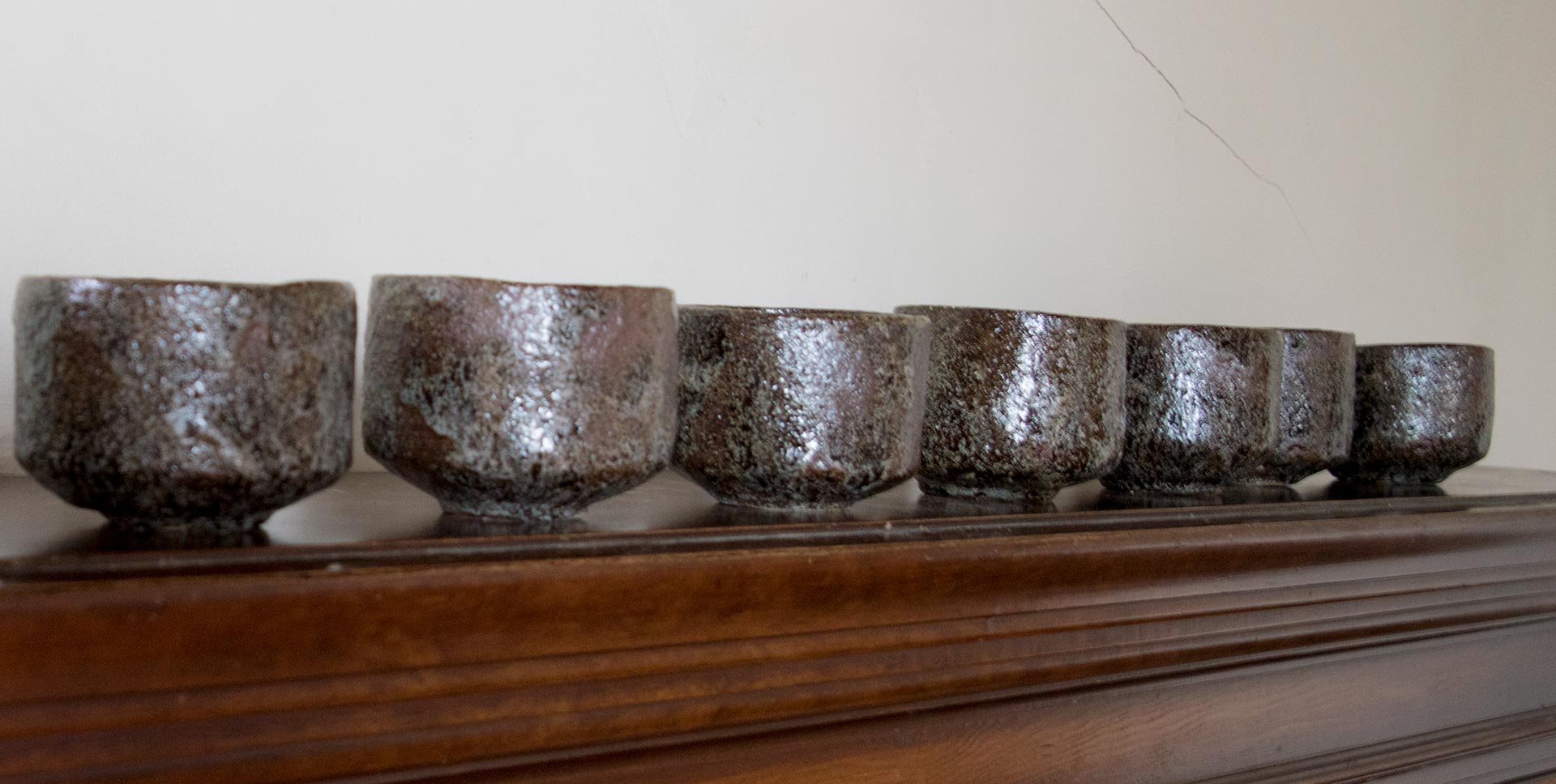It’s no secret that we–like many of you–adore really I was interviewed by the wonderful folks from Tea People about matcha. As part of the same podcast they also interviewed Tom Decker, a Berkeley-based ceramicist, ceramics instructor, and tea lover, who said a lot of interesting and, to me, deeply true things about the nature of matcha and the shared experience of drinking it.
So I contacted Tom and asked if I could see some of his work. He graciously drove over to Marin from Berkeley and brought some of most beautiful bowls I’ve ever encountered. We immediately commissioned some bowls for Breakaway Matcha clients. But it was the story of the bowls, and how Tom makes them, that blew me away.
Tom has taught the clay arts and ceramics all over the world, but somehow one day realized that the ground underneath his house in Berkeley (where his family has lived for more than a century) was full of unbelievably rich clays. In the front yard was a loamy, ochre-colored clay almost ideal for stoneware vessels, but it was pretty hard to excavate — he needed a pick and a digging bar to break it apart. And in the back was an almost black, silty clay, easily obtained with just shovel, that he could turn into earthenware glazes. So he decided to start using both of them in his work.
Both clays first require soaking the hardened material in water. Once the clay has broken down in the water Tom then uses screens to remove any rocks, stick, roots, etc. The wetted clay is then dried and ground to a fine powder, using a huge stone mortar and an aluminum baseball bat (!) as his pestle. This powder is then screened again with a finer sieve. The powdered clay may then be rewetted and formed into a glaze. Tom likes to add some white, local (of course) stone he finds around the neighborhood and laboriously pulverizes it to make the glaze.
In each firing, in a tiny remarkably efficient kiln in his backyard, five tea bowls at a time are fired to mature the clay body and glaze at stoneware temperature (about 2200°F). The kiln is fueled with wood that Tom gathers from the neighborhood, which he then chops and seasons. It takes about three hours to reach temperature, after which it’s cooled for eight hours and then unloaded.
In Japan most ceramicists present their bowls in beautiful wooden boxes (typically paulownia). Tom, naturally, makes his own boxes from local wood (pine), and they’re almost as beautiful as the bowls. We wrap the bowls in turmeric-infused (used originally as an insect repellent in muggy Japan) thin cotton towels before placing them in these lovely handmade boxes.
We’re calling the bowls Rare Earth
And we have an extremely limited quantity. We don’t know when we’ll see more again and we expect them to soon be gone. If you’d like one, you may want to get it quickly.
We couldn’t be happier with them, or with the entire experience of getting to know Tom and his gorgeous art.
UPDATE: Unfortunately these bowls were a limited run, but be sure to check out Breakaway Matcha's other ceramics.
